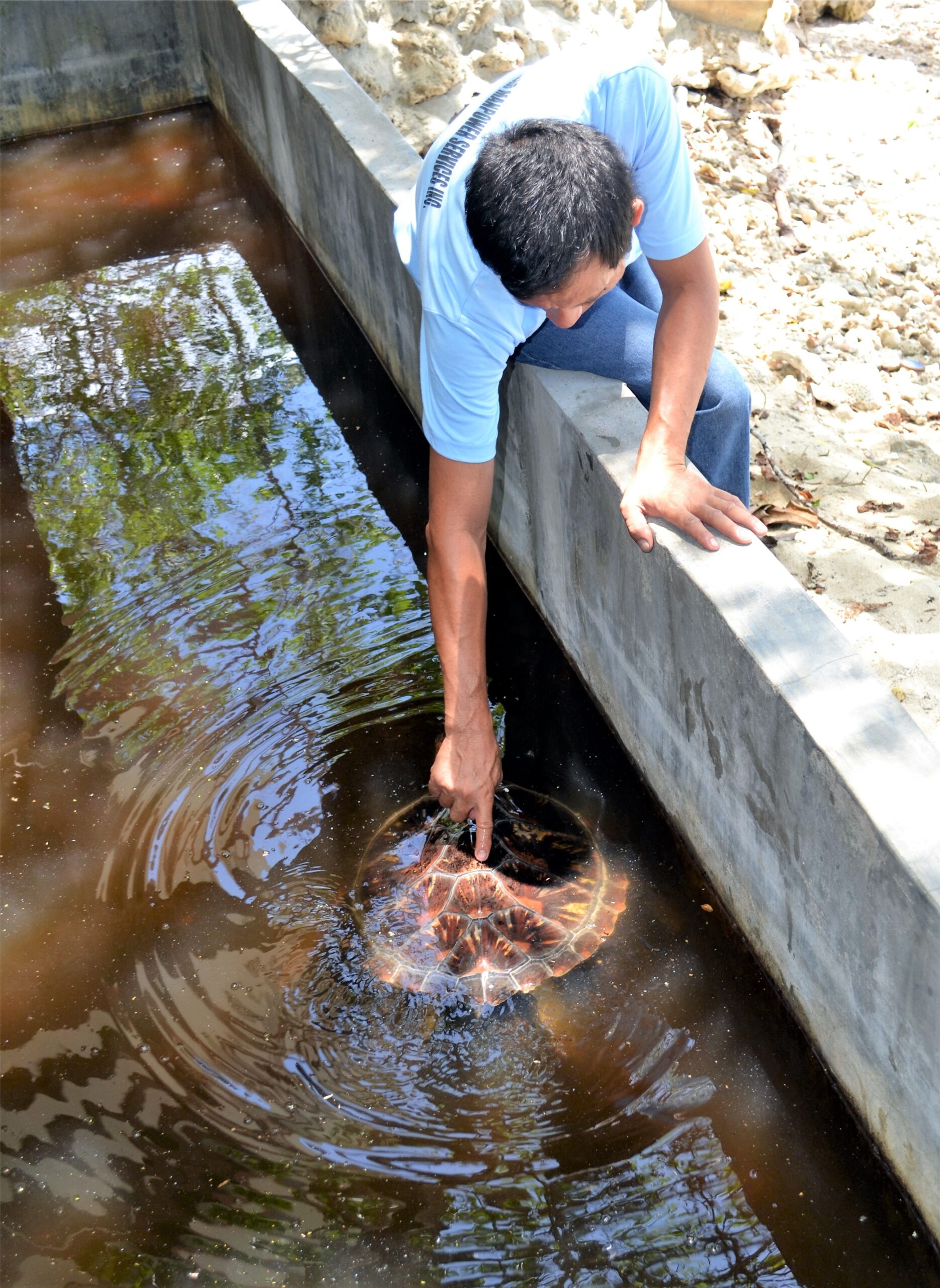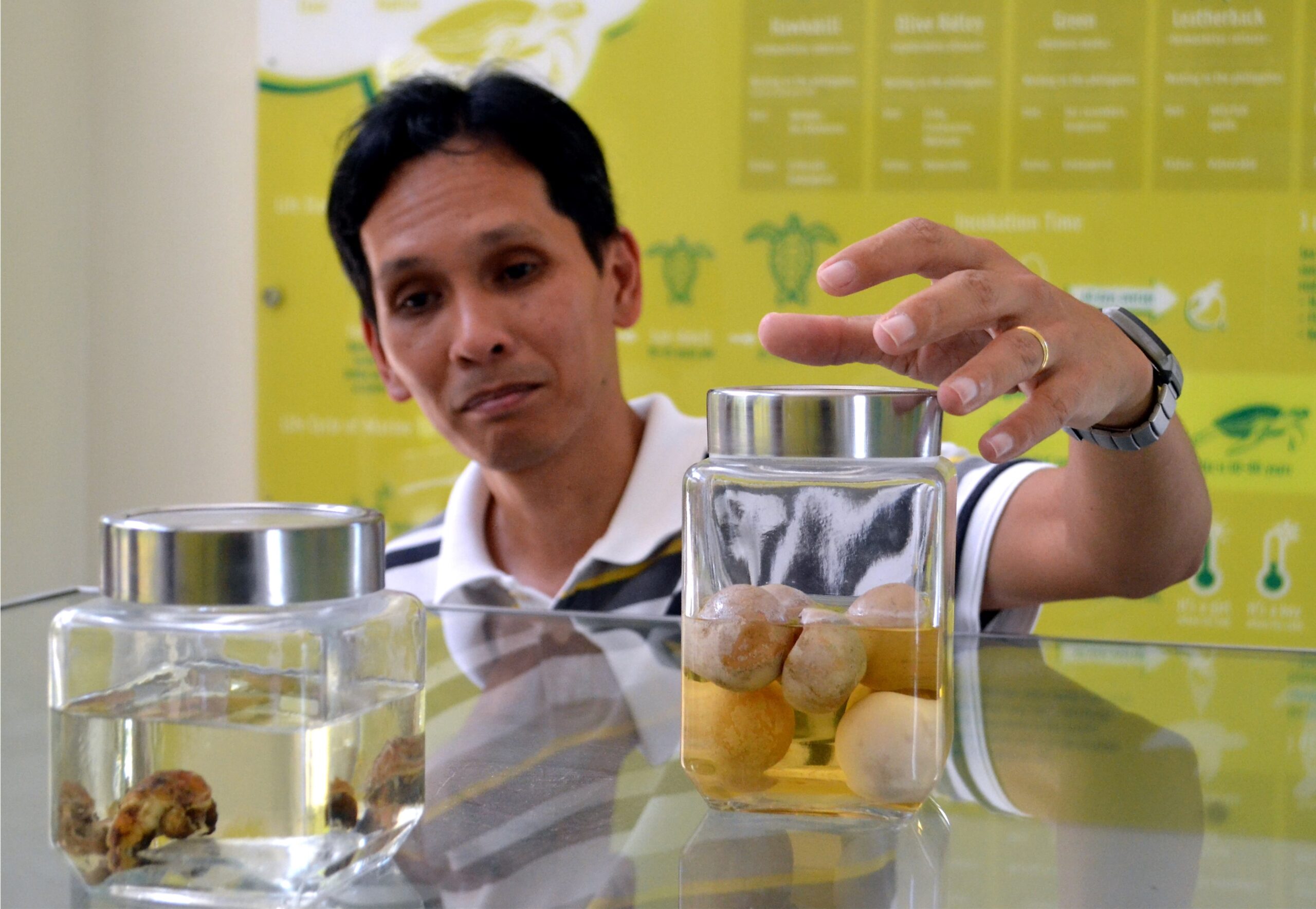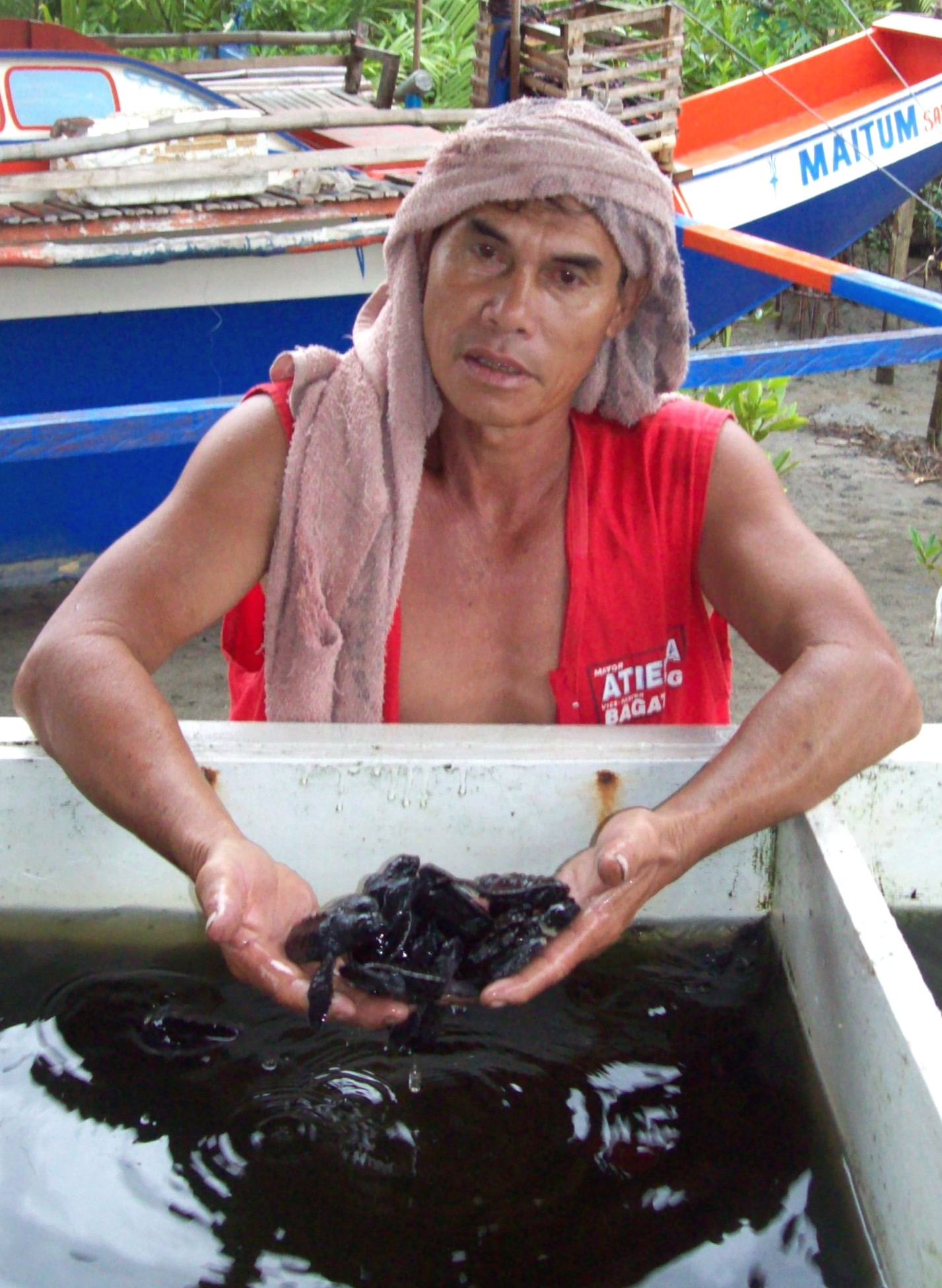Text and Photos by Henrylito D. Tacio
ONCE upon a time, there was a sailboat enthusiast who found himself alone, floating in the middle of nowhere after encountering a sudden sea storm. When his boat capsized, this shipwreck survivor was given a new lease of life by a benevolent marine turtle. A two-day piggyback ride brought this lucky fellow back to land, and he lived happily ever after.
But not for the marine turtles, locally called as pawikan. In the Philippines, marine turtles are now facing extinction. They are hunted in the sea or slaughtered on the beach while they lay eggs. The eggs and meat are taken as food, while their skins and shells are processed into various by-products. As a result, the local population of marine turtles has dropped to dangerously low levels.
“Unless we seriously take on the task of protecting our much-endangered marine turtles, these ancient creatures will no longer be swimming in our waters,” deplores Haribon, one of the country’s well-known environmental groups.
According to the Department of Environment and Natural Resources (DENR), marine turtles are large, air-breathing reptiles that persist today in relatively the same form as their ancestors did 200 million years ago. Curiously enough, they have outlived the dinosaurs.
Marine turtles are well adapted to life at sea. They are powerful swimmers and can remain underwater for long periods of time. They do not have external ears and cannot hear well, but their senses of sight, taste, and touch are well developed. Having no teeth, the marine turtle uses its sharp, horny beak and sturdy jaws to tear and bite its food.
There are only eight species of marine turtles in the world, and five of them can be found in the Philippines, mostly in seven Turtle Islands (Taganak, Baguan, Lihiman, Boaan, Sibaung, Langaan, and Great Bakkungan) in Tawi-Tawi.
The five species found in the Philippines are Green Sea turtle (scientific name: Chelonia mydas), Hawksbill turtle (Eretmochelys imbricata), Olive Ridley turtle (Lepidocheyls olivacea), Loggerhead turtle (Caretta caretta), and Leatherback turtle (Dermochelys coriacea).
Not found in the Philippines are Kemps’ Ridley turtle (Lepidochelys kempi), Flatback turtle (Chelonia depressa), and Black Sea turtle (Chelonia agassizi).



The Green Sea turtle is the only marine turtle that lives on plants. They are the most widely distributed species in the country, with Turtle Islands as a major nesting ground. The Hawksbill turtle, one of the most beautiful sea turtles, are valued for their shells – the source of the so-called “tortoise shell” for handicrafts and jewelry. This species is the second most widely distributed in the Philippines.
Olive Ridley turtle, one of the smallest marine turtles, is distributed throughout the Philippines, with most reports from the coasts of Zambales. Rarely sighted, with documented sightings in Albay, Palawan, and Basilan provinces, are the Loggerhead turtles, which hunt near coral reefs and rocks for food.
The Leatherback turtle is the largest sea turtle living today, as it grows to 190 centimeters long and weighs 600 kilograms. In recent years, most sightings of this species have been reported in the Central Philippines.
All five species of marine turtles are listed by the World Conservation Union as endangered, which means “their populations are in danger of extinction” and are “unlikely to survive if the causes of their decimation continue.”
“Today, man’s growing need for survival has endangered the very existence of these sea-dwelling creatures,” points out the Cavite-based International Institute of Rural Reconstruction. “All over the world, these reptiles are threatened with extinction by indifferent and relentless commercial exploitation.”
Pollution has been cited as one of the prime factors of their disappearance from the Philippine waters. The rapid development of beach resorts for the tourism industry has also contributed to the destruction of nesting beaches of marine turtles.
So is the use of trawl nets in areas where marine turtles abound. Since these scoops up everything in their paths, the turtles, which are not the active targets, also get caught. The poor marine animals are usually drowned to death.
But one of the main reasons for the decline of the marine turtle population is overhunting. Since the dawn of history, the meat of marine turtles has supplemented the diet of man. Seventeenth-century seafaring men used turtles as ship’s provisions – their ability to stay alive for months without food and water ensured a steady supply of fresh meat without storage problems.
Marine turtles are also hunted for their commercial value. In the past, the country was one of the major exporters of turtle by-products, such as turtle wall décor, jewelry pieces, shell-backed guitars, and bags and shoes.
“We can dramatically reduce this demand if we ourselves desist from patronizing these products,” said Haribon. “Put a stop to the massacre by becoming aware of the plight of marine turtles.”
Aside from overhunting, another factor that endangers the survival of marine turtles is the wanton gathering of marine turtle eggs. Mistakenly touted as having aphrodisiac prowess, the eggs taste just like boiled chicken eggs.
“Marine turtles serve as a barometer of our planet’s health,” says the DENR’s Pawikan Conservation Project. “It is possible that in a world in which marine turtles cannot survive may soon become a world in which humans struggle to survive.”
It added that in “saving one of the earth’s most mysterious and time-honored creatures, we might just be saving ourselves, too.”

